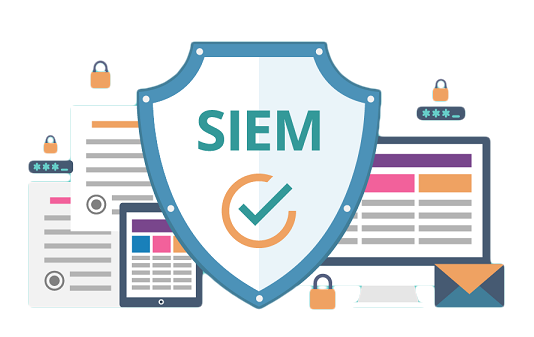Security information and event management (SIEM)
Security information and event management (SIEM) software gives security professionals both insight into and a track record of the activities within their IT environment. It’s a group of complex technologies that together, provide a centralized bird’s-eye-view into a network’s infrastructure. SIEM provides data analysis, event correlation, aggregation and reporting, as well as log management. While SIEM technology has been around for more than a decade, it’s become a critical component of a comprehensive security strategy in today’s threat environment.
So why do you need SIEM? The short answer: If you suffer a breach and are asked ‘What happened?’, you don’t want your answer to be ‘I don’t know.’ But let’s take a look at the more nuanced reasons.

Incident Detection
SIEM enables the detection of incidents that otherwise would go unnoticed. Not only can this technology log security events, they have the ability to analyze the log entries to identify signs of malicious activity. And by gathering events from all of the sources across the network, a SIEM can reconstruct the series of events to determine what the nature of the attack was and whether or not it succeeded.
While a SIEM cannot directly stop an attack, it can communicate with other network security controls, such as firewalls, and direct them to alter their configurations so as to block the malicious activity. An organization can also choose to have its SIEM consume threat intelligence feeds from trusted external sources. If the SIEM detects any activity involving known a known threat, it can then take actions to terminate those connections or interactions to proactively prevent an attack from occurring in the first place.
Regulatory Compliance
SIEM is very prevalent in regulated industries. Failing a compliance audit could not only mean a loss of business but also hefty fines. Companies use SIEM to protect their most sensitive data and to establish proof that they are doing so, which allows them to meet compliance requirements.
A single SIEM server receives log data from many sources and can generate one report that addresses all of the relevant logged security events among these sources. Most compliance reporting requires robust centralized logging capability, and without SIEM, an organization would have to assume the labor-intensive task of retrieving log data individually from each source. If you’re dealing with different operating systems, applications and other pieces of software logging your security events, this undertaking could be incredibly difficult and cost-consuming.
Efficient Incident Management
An SIEM solution can significantly increase the efficiency of incident handling, saving your security professionals time and resources. More efficient incident handling ultimately speeds incident containment, therefore reducing the extent of damage that many incidents cause. A SIEM improves efficiency by:
· Allowing a security professional to quickly identify an attack's route through the network;
· Enabling rapid identification of all sources that were affected by a particular attack; and
· Providing automated mechanisms to attempt to stop attacks that are still in progress.
For comprehensive security visibility, you need an SIEM solution that provides true actionable intelligence that security professionals need to quickly understand their threat posture and prioritize response.


